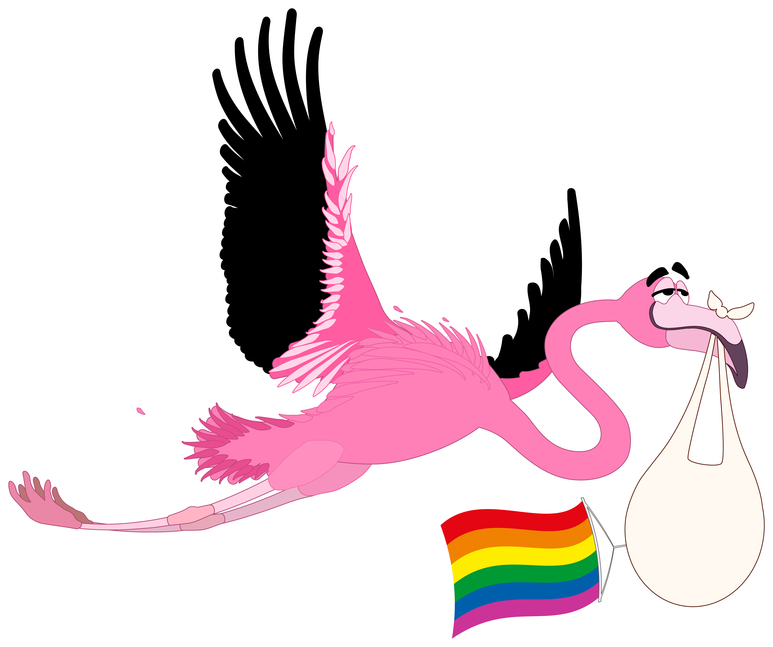
Most of us know what the first four letters in LGBTQIA stand for: Lesbian, Gay, Bisexual, and Transgender. Many of us know what the “Q” represents-Queer/Questioning. A few may even know that the “A” stands for Asexual. What is that mysterious “I” on this gender and sexually diverse acronym?
Intersex
The “I” represents the Intersex population, a population that, in much of the LGBTQ culture, exists in an aura of invisibility and misunderstanding. The Intersex Society of North America defines Intersex as, “a general term used for a variety of conditions in which a person is born with a reproductive or sexual anatomy that doesn’t seem to fit the typical definitions of female or male.” These differences not only encompass visible genitalia, but also differences in hormones, genetics, etc that differ from traditional male and female models. The term “intersex” replaces the outdated term “hermaphrodite.”
Much of the current discourse on gender and sexuality has drawn heavily from Queer Theory; an infinitely difficult critical theory to define since it’s main aim is to deconstruct labels and dichotomies. In the discussion on gender and sexuality through a Queer Theory lens, discourse about biological sex has been largely left behind. Much like sexuality and gender were once thought to be, biological sex has been assumed to be an unchangeable and compulsory binary. Bodies that conformed to proscribed models of what male and female biology entailed (through genitalia, chromosomes, hormones, etc) were considered “normal,” while any difference was considered “abnormal” and something to cause great alarm for the parents and often a lifetime of coercive, and predominantly cosmetic, surgeries for the child.
Queer Theory has many concepts that can be directly and easily applied to thinking about binary biological sex as a cultural construction and the reality of biology to be more fluid than our society has previously allowed, in much the same way many of us now think about gender and sexuality as a fluid concept.
1. Binary sex is a fantasy.
Wait a minute, you say! I don’t know anyone who is intersex! Well, when was the last time you did a complete chromosomal and hormone test on all of your friends and family? That’s what I thought. Many of us know people who are intersex without knowing it. Though medical and psychological advice is now changing, for many years, parents were told to surgically intervene early and to shroud the body with secrecy, practices that studies have shown to be harmful both physically and mentally. This has led to a great deal of shame in intersex individuals about their bodies.
How common are individuals who are born intersex?
Based on the most recent research, the total number of people whose bodies differ from traditional male or female bodies is 1 in every 100 births.
2. Intersex individuals are already whole beings.
What a radical concept! When doctors and parents focus too heavily on genitalia, there is an invisibility of the whole person that tends to happen. The message is given that you are not a whole being until some physical aspect of your body is “corrected.” Surgery is never a prerequisite to being fully embodied. Many individuals who have had coercive surgery as children radically accept and embody their “queer-ness” with pride. There is now a movement and advocacy around letting intersex children make their own choices about their bodies when they are ready and to only perform surgery when it is medically necessary, as opposed to for cosmetic reasons. There is a reclaiming of queer bodies as whole bodies.
3.The concern about non-binary bodies is political.
Within Queer Theory there is an idea that the “personal is political.” This means that much of our identity, and what society views as an “acceptable” identity, is culturally constructed for a certain purpose. When thinking about intersex individuals, this idea begs the question, “Why do we feel the need to police normative bodies?” What could be the purpose of this? In a word-heterosexism. Heterosexism is the cultural system that says biological sex, gender, and sexuality must line up in a predictable and heterosexual way to be acceptable, and denies and stigmatizes any who fall outside of this mold. The body is seen as the foundation of gender. If biological sex is not binary, this throws a wrench in this deeply embedded cultural system. Oppression is a system that seeks to separate the oppressed individual from their bodies and sense of embodied pride. The embodied person threatens oppressive norms.
The truth is that there is a galaxy of possibly gender and sexually diverse identities, and to limit or police these expressions of identity on the basis of biological features is harmful. It is our task to continue broadening our conception of what it means to be an embodied human.
IntraSpectrum Counseling is Chicago’s leading psychotherapy practice dedicated to the LGBTQ+ community, and we strive to provide the highest quality mental health care for multicultural, kink, polyamorous, and intersectional issues. For anyone needing affirming and validating support in their healing, please click here or email us at help@intraspectrum-chicago.com.
_______________________________
Resources:
Intersex Society of North America-Isna.org
IntraSpectrum Counseling-Intraspectrum-chicago.com
Blackless, Melanie, Anthony Charuvastra, Amanda Derryck, Anne Fausto-Sterling, Karl Lauzanne, and Ellen Lee. 2000. How sexually dimorphic are we? Review and synthesis. American Journal of Human Biology 12:151-166.
Dreger, Alice Domurat. 1998. Ambiguous Sex—or Ambivalent Medicine? Ethical Issues in the Treatment of Intersexuality. Hastings Center Report, 28, 3: 24-35.
Hall, K. Q. (2005), Queerness, Disability, and The Vagina Monologues. Hypatia, 20: 99–119. doi: 10.1111/j.1527-2001.2005.tb00375.x





 Today, July 26th, is National Disability Independence Day. This annual commemoration marks the day in 1990 when the Americans with Disabilities Act (ADA) was signed into law. The ADA enshrined several crucial civil rights protections for individuals with disabilities, but it still falls short of its intended goals after over 30 years on the books.
Today, July 26th, is National Disability Independence Day. This annual commemoration marks the day in 1990 when the Americans with Disabilities Act (ADA) was signed into law. The ADA enshrined several crucial civil rights protections for individuals with disabilities, but it still falls short of its intended goals after over 30 years on the books.